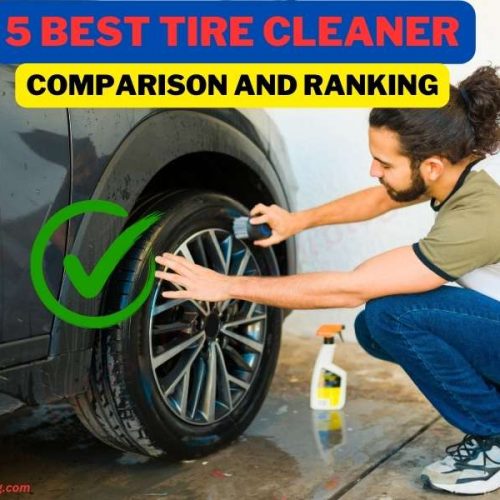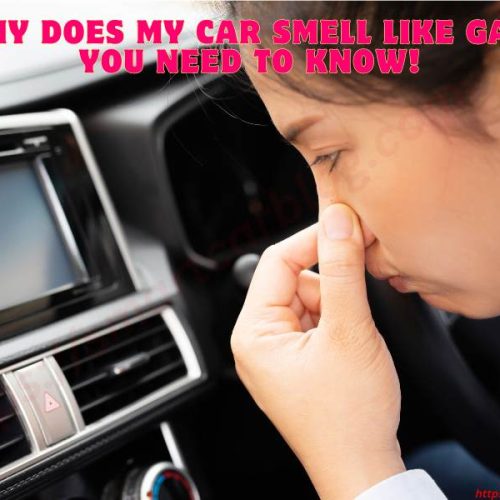Need help with how to reset your tire pressure light? You’re not alone. This is a common challenge for drivers, often leading to confusion and a dash of frustration. In this comprehensive guide, we’re going to demystify the process, breaking down the steps you need to follow to reset that stubborn tire pressure light. It’s a simpler task than most people think, and understanding it can be incredibly empowering, especially if you’re new to car maintenance.
Imagine driving with the peace of mind that comes from knowing exactly how to address this issue. No more unnecessary stops at the service station or feeling helpless when that light flickers on. You’ll have the knowledge and confidence to handle it yourself, ensuring your car’s tires are always in prime condition for a safe and smooth journey.
Keep reading to uncover the secrets behind resetting your tire pressure light. From quick fixes to understanding when professional help is needed, we’ve got you covered. Let’s turn off that pesky light together and get you back on the road with assurance and ease.
Table of Contents
ToggleUnderstanding the Tire Pressure Light
Ever spotted that bothersome light on your car’s dashboard, the one shaped like an exclamation point within a horseshoe? It’s essentially your car’s method of telling you, “It’s time to discuss your tire pressure!” Grasping the significance of this tire pressure indicator goes beyond simply eliminating a distracting light on your dashboard; it’s vitally important for ensuring your safety while driving.
What is the Tire Pressure Warning Light?
To begin with the fundamentals, the tire pressure warning light is represented as an exclamation mark inside a flat-bottomed circle with two curvy lines. This symbol serves as your vehicle’s integrated alert system.
It’s like your car’s way of nudging you, saying, “Something’s up with your tires!” This light pops up when your tire pressure is not what it’s supposed to be. It could mean your tires are underinflated, which can lead to all sorts of troubles, like reduced fuel efficiency and even tire blowouts. Yikes!
The Role of Tire Pressure in Vehicle Safety
You might be wondering, “It’s just air, isn’t it? Can it be that important?” Well, fasten your seatbelts because tire pressure is indeed a big deal! Properly inflated tires are essential for safe handling and braking. They also play a huge role in your vehicle’s overall stability and performance. Imagine wearing shoes that are either too tight or too loose – that’s how your car feels with incorrect tire pressure.
How the Tire Pressure Monitoring System Works
So, how does your car even know something’s off with the tires? Enter the Tire Pressure Monitoring System (TPMS). This nifty feature keeps an eye on the pressure levels in your tires. If the pressure in one or more tires drops below the manufacturer’s recommended level, the TPMS lights up that warning on your dashboard. It’s like having a guardian angel for your tires, constantly ensuring they’re in tip-top shape.
Common Reasons Why the Tire Pressure Light Illuminates
But what makes this light come on in the first place? There are a few usual suspects.
⇒ Seasonal Temperature Changes and Tire Pressure: One of the most common reasons for tire pressure changes is the weather. Yep, just like us, tires react to temperature changes. In colder months, tire pressure can drop, while in hotter months, it can increase. This fluctuation is totally normal, but it’s also why that tire pressure light might pop on when the seasons change.
⇒ Punctures and Slow Leaks: Then there are the more obvious reasons, like punctures or slow leaks. A nail on the road or a sharp object can cause a small puncture, leading to a slow leak. Sometimes, it’s so gradual that you don’t notice until your car’s TPMS lights up like a Christmas tree.
How To Reset Tire Pressure Light?
So, that tire pressure light on your dashboard is glowing again, and you’re thinking, “What now?” Don’t worry; resetting this light is often a straightforward process. Here’s your handy guide to get that tire pressure light back to its dormant state, where it belongs.
Preparing to Reset the Tire Pressure Light
First things first, let’s preparation for this mini-mission. Resetting your tire pressure light isn’t just about pushing buttons; it’s more like detective work – you need first to figure out why it’s on. So, grab your Sherlock Holmes hat, and let’s get sleuthing!
Ensuring Correct Tire Pressure
The most common culprit for a lit tire pressure light is, unsurprisingly, incorrect tire pressure. Here’s what you need to do:
Check Your Tire Pressure: Use a loyal tire pressure gauge to prevent the pressure in all your tires, including the spare. Yes, the spare, too – it’s often part of the gang and can trigger the light.
Refer to Your Owner’s Manual: Look up the suggested tire pressure for your vehicle in the owner’s manual. It’s not a one-size-fits-all situation; every car has its sweet spot.
Adjust Accordingly: If any tires are underinflated, fill them up to the recommended level. If they’re overinflated, let some air out. It’s like Goldilocks and the Three Bears – you want it just right.
Tools and Equipment Needed for Resetting
Now, if your tires are all hunky-dory with the right pressure, but that light is still stubbornly on, it’s time to reset it manually. Here’s what you might need:
- Tire Pressure Gauge: Essential for checking each tire’s pressure.
- Owner’s Manual: This is your go-to guide. It often has specific instructions for resetting the tire pressure light for your car model.
- A Reset Button: Some cars have a dedicated reset button for the TPMS. Its location can vary, so your owner’s manual is your treasure map here.
Note: Sometimes, the reset process can involve driving at a certain speed or pressing a combination of buttons. It’s like a secret handshake with your car – you need to know the right moves.
Resetting Tire Pressure Light: Vehicle-Specific Instructions
Alright, you’ve checked your tire pressure, and everything seems fine, but that tire pressure light is still shining like a stubborn little star on your dashboard. Sometimes, you need to get specific – each car has its unique way of saying, “Here’s how you can turn me off.” Let’s walk through the reset process for some common car models and throw in a few troubleshooting tips for good measure.
Reset Process for Common Car Models
Different strokes for different folks – or, in this case, different resets for different cars. Here’s a quick guide to some popular models:
Toyota: Most Toyotas have a reset button located under the steering wheel. Press and hold it until the light blinks three times, then release and wait a few minutes. Voila!
Honda: To reset the tire pressure light in a Honda CR-V and any Hondas, simply turn the ignition to the ‘on’ position, press and hold the TPMS reset button until the light blinks twice, then release it
Ford: In some Ford models, you’ll need to turn the ignition from ‘off’ to ‘run’ three times, ending in ‘run.’ Press and release the brake pedal, then do the ‘off’ to ‘run’ sequence again. The light should blink to indicate it’s resetting.
Keep It Mind: Remember, these are general guidelines. Always check your owner’s manual for the exact procedure for your specific model.
Tips for Troubleshooting
If the standard reset process isn’t working, don’t pull your hair out just yet. Here are some troubleshooting tips:
Check All Tires Again: Sometimes, a second check helps, especially if you have a slow leak.
Drive Around a Bit: Some vehicles need a little drive time to recalibrate the TPMS. A quick spin around the block might just do the trick.
Check the TPMS Itself: If the light stays on no matter what, it might be an issue with the TPMS sensor. A visit to the mechanic might be in order.
When to Seek Professional Help
Occasionally, our do-it-yourself attempts reach a dead end, particularly with car upkeep. Recognizing when to throw in the towel and get expert assistance can save you time, money and, crucially, ensure your safety while driving. Let’s talk about those moments, particularly concerning tire pressure issues when it’s best to call in the cavalry – your trusted mechanic.
Identifying Persistent Tire Pressure Issues
So, you’ve tried all the tricks in the book: checking tire pressure, resetting the Light, even talking sweetly to your car (we’ve all been there), but that tire pressure light is as persistent as a cat demanding breakfast. Here’s how to identify when it’s more than just a simple pressure fluctuation:
The Light Doesn’t Go Off: If the tire pressure light remains on after you’ve checked and adjusted the tire pressure and attempted a reset, it’s time to consider other possibilities.
Frequent Pressure Drops: If you find yourself constantly needing to top up your tires, there might be an underlying issue that needs a professional eye.
Uneven Wear on Tires: Notice that your tires are wearing down unevenly? This could indicate an alignment or tire issue that goes beyond just pressure.
When to Visit a Mechanic
Let’s get down to specifics – when exactly should you drive to your mechanic (with the appropriate tire pressure, of course)?
After Trying Basic Troubleshooting: If you’ve followed all the basic steps and the problem persists, a mechanic can diagnose issues that aren’t immediately apparent.
If You Suspect a Sensor Issue: Sometimes, the problem lies with the Tire Pressure Monitoring System (TPMS) sensor itself. This is a job for the pros.
For Regular Maintenance Checks: Regular check-ups can prevent issues from cropping up in the first place. It’s like going to the doctor but for your car.
Understanding Serious Tire Pressure Alerts
Your car’s tire pressure light isn’t just a fancy feature; it’s a critical warning system. When it illuminates, it’s usually a standard alert, but if it starts blinking or comes with other dashboard warnings, it’s signaling a more serious issue. This could be a malfunction in the TPMS or a severe tire problem. In these cases, it’s not just advisable but essential to get professional help.
Professional Services for Tire Pressure Management
For the sake of your vehicle’s durability and safety, often, the wisest choice is to rely on the experts. Tire pressure may appear to be a minor aspect, yet its proper maintenance is essential for the overall well-being of your car. Skilled services can play a key role in this, offering expertise and peace of mind. Let’s delve into why regular maintenance and professional tire inspection are worth considering.
Regular Maintenance and Tire Pressure Monitoring
Think of your car as a teammate in your daily life. Just like any good team member, it needs regular check-ins and maintenance to perform at its best. Here’s where professional services come in:
Expertise in Tire Pressure Monitoring: Professionals have the tools and know-how to accurately assess and adjust your tire pressure, ensuring it’s always at an optimal level.
Access to Advanced Tools: Tire pressure monitoring systems (TPMS) have become more sophisticated. Specialists have the latest tools and technology to analyze and fix any TPMS issues accurately.
Preventative Maintenance: Regular check-ups can catch potential problems before they become major issues. It’s not just about fixing problems; it’s about preventing them.
Benefits of Professional Tire Inspection
While DIY tire checks are great for day-to-day maintenance, a professional tire inspection comes with its own set of benefits:
Thorough Examination: A professional can provide a comprehensive assessment of your tires beyond just pressure. They’ll check for wear and tear, alignment issues, and other potential hazards.
Safety Assurance: Tires are critical for safe driving. A professional inspection ensures that your tires are in top shape, giving you peace of mind on the road.
Cost-Effective in the Long Run: Regular professional inspections can prolong the life of your tires, saving you money in the long term. It’s an investment in the longevity of your vehicle.
Preventive Measures and Best Practices
In the world of car maintenance, an ounce of prevention is worth a pound of cure. When it comes to your tires, this couldn’t be truer. Maintaining optimal tire pressure not only keeps you safe on the road but also enhances your car’s performance and efficiency. Let’s explore some routine check-balancing techniques and understand how tire pressure impacts fuel efficiency.
Maintaining Optimal Tire Pressure
Keeping your tire pressure at the manufacturer’s recommended level is key. It’s not just about avoiding the tire pressure light; it’s about ensuring your vehicle’s longevity and your safety. Here’s how to stay on top of it:
Routine Checks and Balancing
Regular Tire Pressure Checks: Make it a habit to check your tire pressure at least once a month. Remember, tires can lose air over time, even without leaks.
Use a Quality Tire Gauge: Invest in a reliable tire pressure gauge. It’s a small tool, but it plays a big role in maintaining tire health.
Don’t Forget the Spare: Your spare tire needs love, too. Check its pressure regularly so it’s ready when you need it.
Balancing and Rotation: Have your tires balanced and tire rotated according to your vehicle’s maintenance schedule. This helps in even wear and tear, extending the life of your tires.
Visually Inspect Tires: Keep an eye out for any visible signs of tire distress like cuts, bulges, or objects lodged in the tire.
Impact of Tire Pressure on Fuel Efficiency
Did you know that your tire pressure can affect your wallet? Here’s how:
Underinflated Tires and Fuel Consumption: When your tires are underinflated, they create more resistance when rolling. This means your car has to work harder, burning more fuel in the process.
Optimal Pressure for Maximum Efficiency: Maintaining the recommended tire pressure ensures your car rolls smoothly, reduces fuel consumption, and saves you money at the pump.
Environmental Impact: Efficient fuel use isn’t just good for your pocket; it’s also good for the environment. Less fuel consumption means fewer emissions.
Upgrading Your Vehicle’s Tire Pressure Monitoring System
In the constantly advancing realm of car technology, keeping up can greatly enhance your driving experience and safety. One way to stay ahead is by upgrading your vehicle’s Tire Pressure Monitoring System (TPMS), a move that can boost performance and give you greater peace of mind. Let’s delve into the advanced monitoring technologies available and weigh the pros and cons of DIY versus professional installation.
Advanced Monitoring Technologies
Modern TPMS advancements have transformed how drivers monitor tire health. Here’s a snapshot of what the latest technology offers:
Real-Time Pressure Readings: Advanced systems provide real-time data, allowing you to monitor the precise pressure of each tire as you drive.
Temperature Monitoring: Some high-end systems also track the temperature of your tires, which is crucial for preventing overheating and related tire damage.
Smartphone Integration: Many modern systems offer integration with your smartphone, sending alerts and updates directly to your device.
Enhanced Accuracy: Newer TPMS models boast higher accuracy, ensuring that you receive the most reliable information about your tire conditions.
DIY vs. Professional Installation
When it comes to installing an upgraded TPMS, you have two main options: roll up your sleeves and do it yourself, or let a professional handle it. Let’s explore both:
DIY Installation
- Pros:
- Cost-Effective: Doing it yourself can save on labor costs.
- Learning Experience: It’s an opportunity to understand your vehicle better.
- Satisfaction: There’s a certain pride in upgrading your vehicle on your own.
- Cons:
- Complexity: TPMS installation can be complex, requiring specific tools and knowledge.
- Risk of Error: Incorrect installation can lead to faulty readings and potential safety risks.
Professional Installation
- Pros:
- Expertise: Professionals have the right tools and knowledge to ensure a flawless installation.
- Time-Saving: Letting a pro handle it saves you time and effort.
- Reliability: You can trust that your system will function correctly from the get-go.
- Cons:
- Cost: Professional installation will come at a higher price compared to DIY.
upgrading your vehicle’s TPMS can significantly enhance your driving safety and convenience. Whether you opt for DIY or professional installation, the key is ensuring that the system is correctly set up to provide accurate and timely information about your tire conditions. With the right TPMS in place, you can drive with greater confidence, knowing that your tire health is continuously monitored.
Last verdict
The tire pressure light on your car’s dashboard is an essential indicator of your vehicle’s health, not just a simple warning. Properly managing and maintaining tire pressure is crucial for safe driving and optimal car performance. Resetting this light typically involves a few straightforward steps, but it’s important to treat it as a significant warning sign. Regular maintenance and understanding the role of tire pressure in vehicle safety are key. Utilizing advanced Tire Pressure Monitoring System (TPMS) technologies can aid in providing real-time data and alerts, ensuring safety on the road.
The essence of resetting the tire pressure light goes beyond just turning off an indicator; it’s about keeping your vehicle in top condition, ensuring your safety, and enhancing car performance. By adopting a proactive approach to tire pressure management, you not only take care of your vehicle but also protect your journey. Remember, every part of your vehicle plays a role in your driving experience, and staying informed about tire pressure ensures a smoother, safer, and more efficient ride.
FAQ
Q: How do I clear the tire pressure light?
A: To clear the tire pressure light, first ensure your tires are inflated to the recommended pressure. Then, depending on your vehicle, you may need to drive for a few minutes at a certain speed or manually reset the light using a button usually located under the steering wheel or within the vehicle settings.
Q: Will the tire pressure light reset itself?
A: In many cases, the tire pressure light will reset itself once you have corrected the tire pressure. However, some vehicles require a manual reset or a brief drive to recalibrate the system.
Q: Why is my low tire pressure light on, but my tires are fine?
A: This could be due to a change in weather affecting tire pressure, a malfunctioning TPMS sensor, or a need for system recalibration. It’s recommended to check your tire pressure manually and reset the TPMS if needed.
Q: Why is my TPMS light on when my tires are full?
A: If your TPMS light is on despite the correct tire pressure, it may indicate a malfunctioning sensor or a problem with the TPMS system itself. A professional inspection can help identify and resolve the issue.
Q: Why won’t my tire pressure reset?
A: If your tire pressure doesn’t reset, it might be due to incorrect tire pressure adjustment, a faulty TPMS sensor, or a system that requires specific reset procedures. Consult your vehicle’s manual or seek professional help.
Q: Why won’t the tire pressure light go away?
A: This could be caused by uneven tire pressure, a faulty sensor, or system errors. Ensure all tires are properly inflated and reset the TPMS. If the light persists, a professional diagnostic may be necessary.
Q: Can I drive with the tire pressure light on?
A: While it’s usually safe to drive a short distance, driving with the tire pressure light on is not advisable for extended periods. It indicates a potential tire pressure issue which could affect vehicle handling and safety.
Q: Is low tire pressure serious?
A: Yes, low tire pressure can lead to reduced fuel efficiency, poor handling, longer stopping distances, and even tire blowouts. It’s important to address low tire pressure promptly.
Q: What is the difference between the tire pressure light and TPMS?
A: The tire pressure light is a warning indicator on your dashboard, signaling that one or more tires are not at the recommended pressure. The TPMS is the system that monitors tire pressure and triggers this warning light.
Q: Where is the TPMS sensor located?
A: TPMS sensors are typically located inside each tire, attached to the valve stem or wheel. They continuously monitor the pressure and report it to the vehicle’s computer system.
Q: How do you reset TPMS without a reset button?
A: Some vehicles may recalibrate TPMS automatically after tires are inflated to the correct pressure and the vehicle is driven for a short distance. Check your owner’s manual for specific instructions for your car.
Q: Can I use tires without TPMS?
A: While it’s possible to use tires without TPMS, it’s not recommended as it turns off an important safety feature. Most modern vehicles are equipped with TPMS as a standard, and in some regions, it’s legally required.

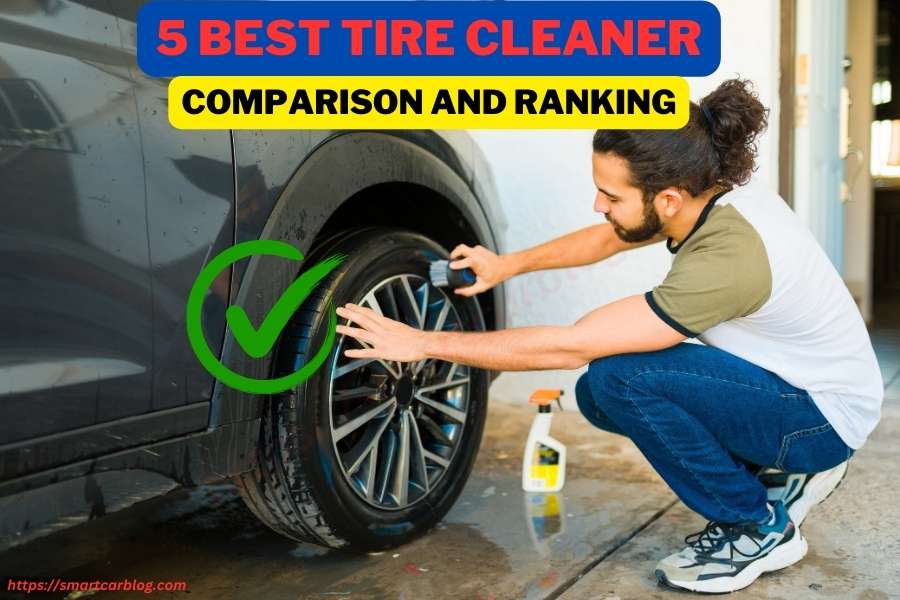
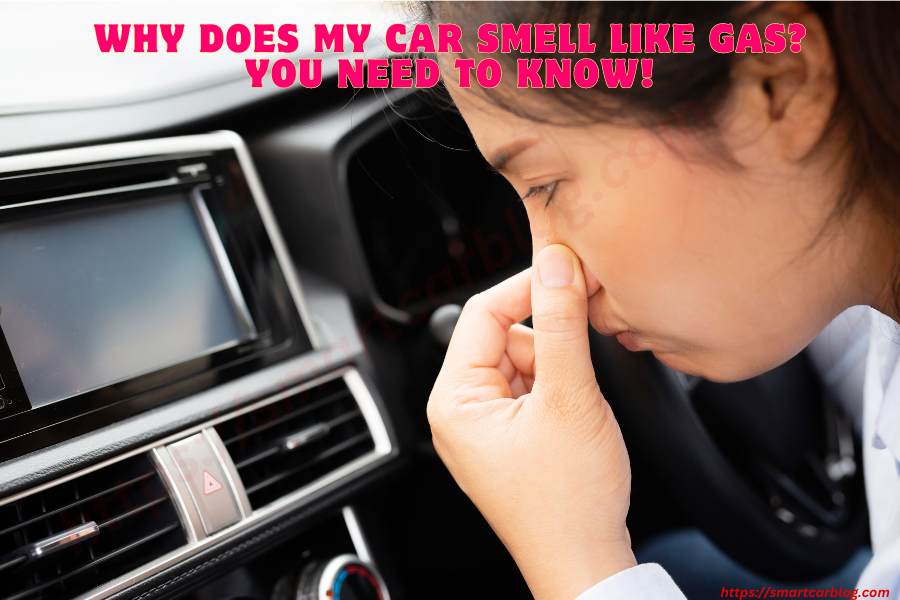
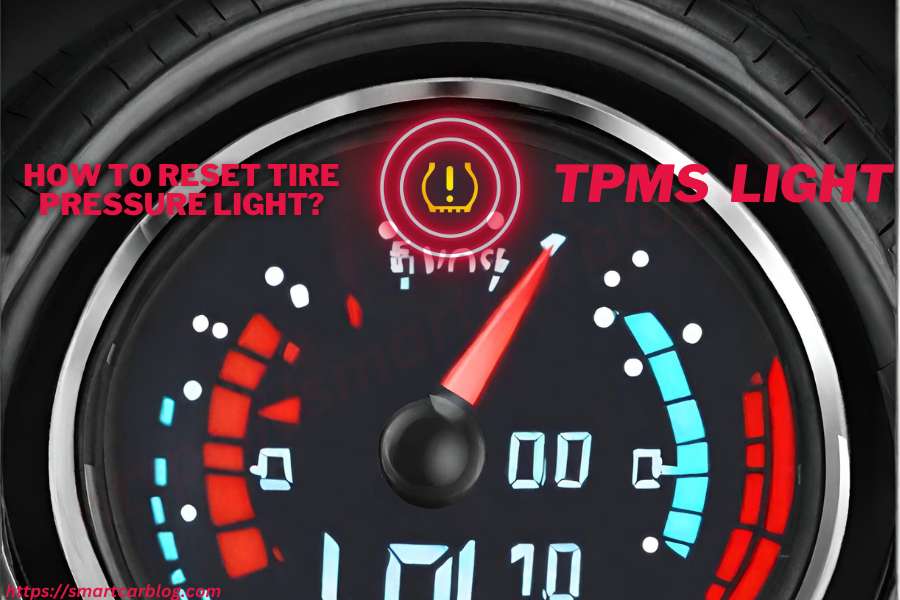
 Welcome to SmartCarBlog.com! I’m Rashel Miajee, The proud founder of smartcarblog.com. This is a part of
Welcome to SmartCarBlog.com! I’m Rashel Miajee, The proud founder of smartcarblog.com. This is a part of 
